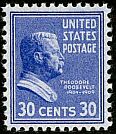
The Thirty-cent Prexie
World War II airmail to Europe
The war in Europe had been going on for some time before the United States entered in December of 1941. It might have been possible to send airmail to Europe in the first days of December, but if they were caught up in Bermuda censorship, as several of the covers to be shown in this section were, they very well might have run past the time they could have been delivered. Here we will show covers sent from December 1941 through 1944 before airmail to Europe was restored.
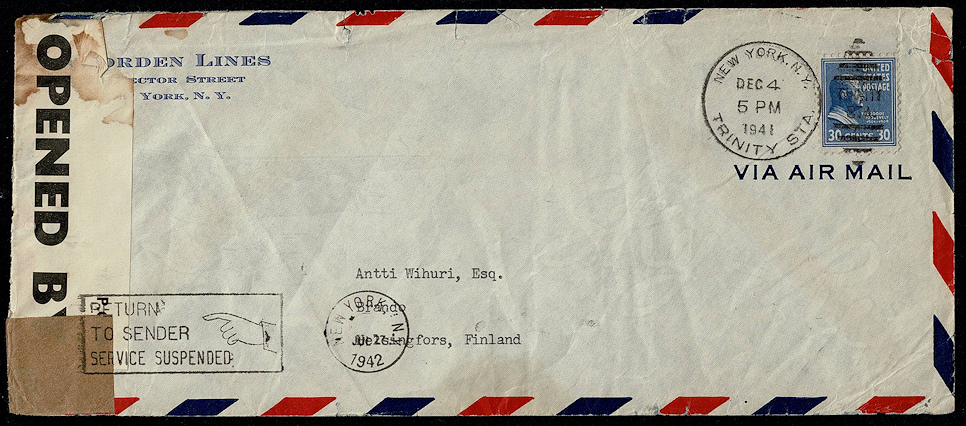
Sent on December 4, 1941 this cover was probably residing in Bermuda until we entered the war. It was returned as undeliverable. Note the "pointing hand" handstamp, "Return to sender, service suspended."
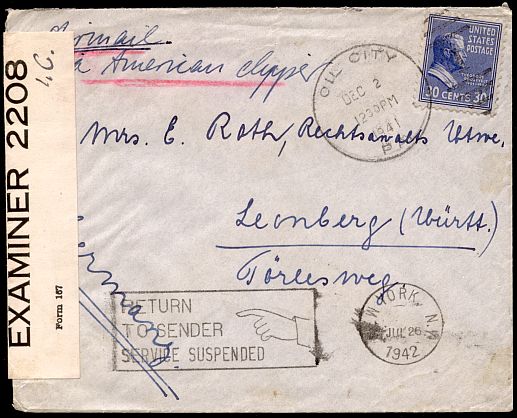
This cover, mailed December 2, 1941, did not make it to Germany before the outbreak of war. It was not back in New York until July 26, 1942.
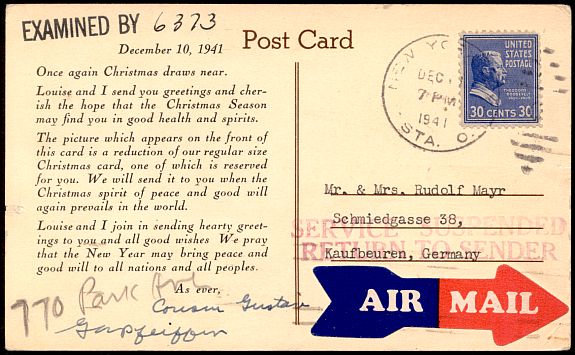
Post cards did not get their own foreign airmail rates until June 1, 1954. This Christmas postcard was sent to Germany via airmail in December of 1941. The civil censorship marking "EXAMINED BY 6373" would indicate that it was mailed after war was declared, but the exact date is unreadable. It was returned to New York on March 30, 1942, and the penciled address indicates that the senders were tracked down so it could be given back.
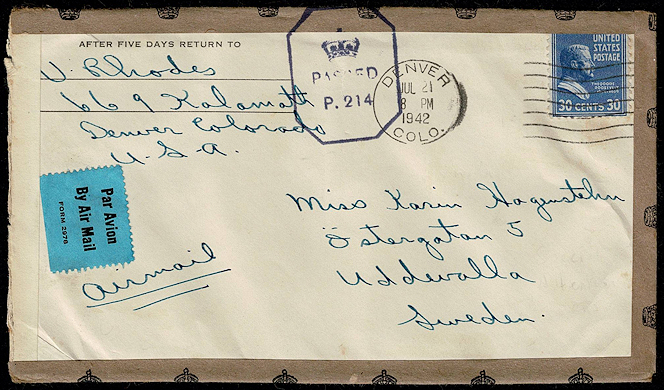
Sweden remained neutral during World War II, but it was not always easy to get airmail to it. Mailed in July of 1942, there is no arrival date stamped on this cover, so we can't tell how it got from England to Sweden. It was censored in the U.K.
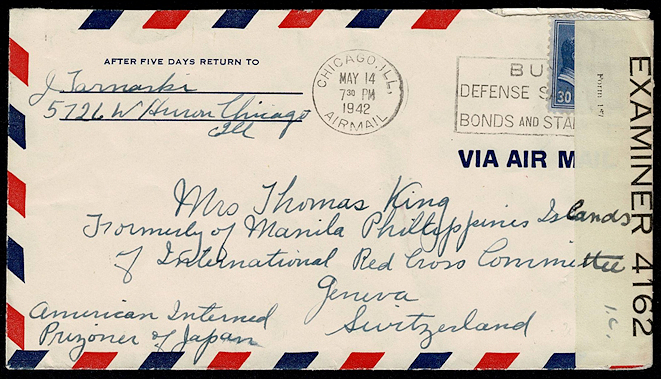
Airmail to Switzerland was suspended in late 1942, but Red Cross and prisoner of war mail was allowed through. This cover, mailed to the Red Cross earlier in 1942, was directed to a civilian who was interned in the Philippines.
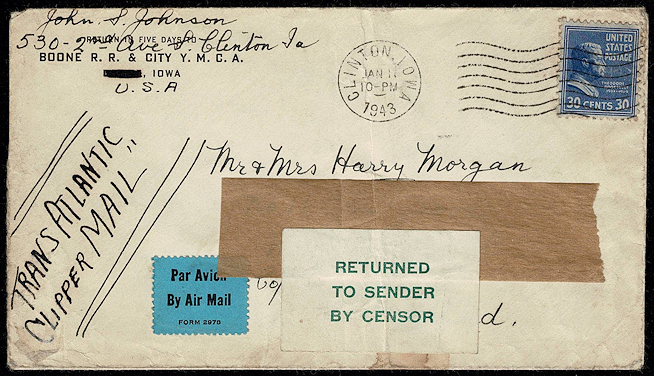
The censors apparently really read mail sent to England, and didn't always let it go through. Without knowing the reason this 1943 letter was returned, we can only guess whether it mentioned a son stationed someplace, or a ship's position, or just the weather.
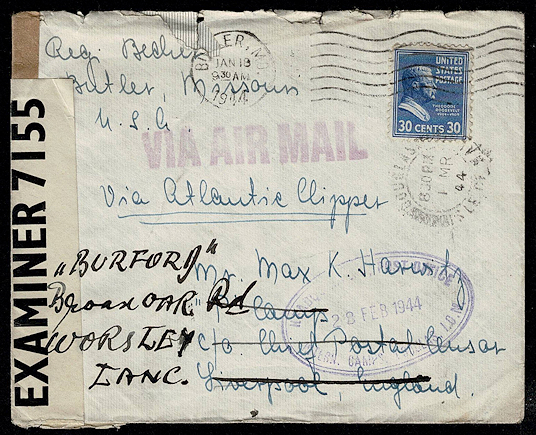
This letter got to England, directed to an individual who was in an internment camp on the Isle of Man, but had moved to Worsley, in Lancashire. Or perhaps he was an official who helped run the camps?
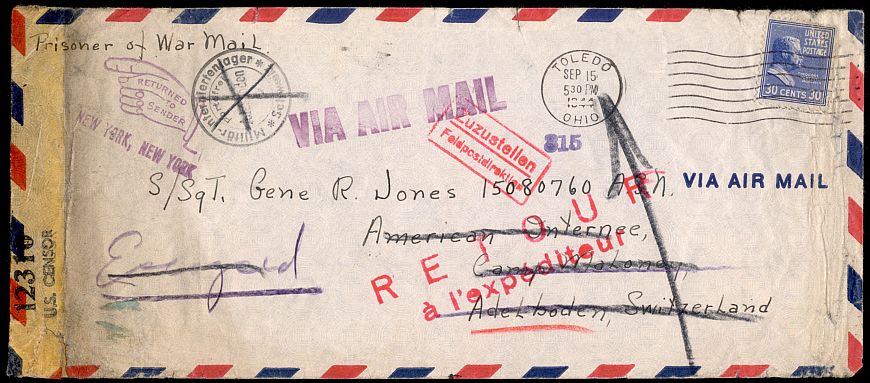
This cover was sent to an American internee in Switzerland on September 15, 1944. The special airmail rate of six cents to prisoners of war or detainees appears to have only applied to those held in enemy-controlled countries, and Switzerland was neutral. The cover bears the note "Escaped" which probably explains why it was returned to sender. A postmark on the back indicates it was back in New York on March 17, 1945.
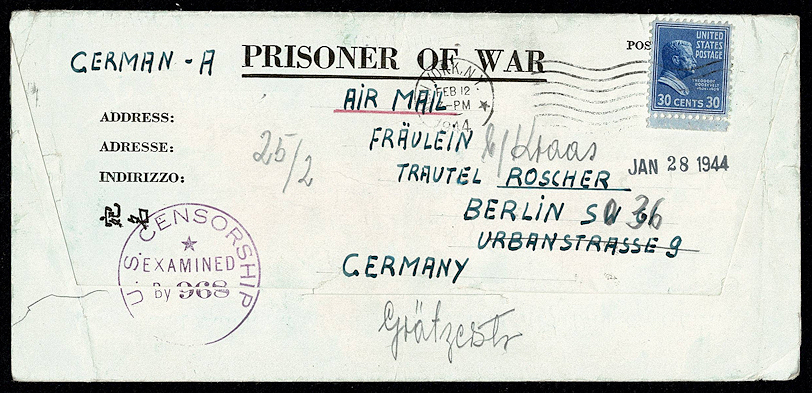
This is a letter from a German lieutenant being held as a prisoner of war in a camp in Trinidad, Colorado. Sent in February of 1944, it was censored in New York at a special unit that dealt with prisoner of war mail.
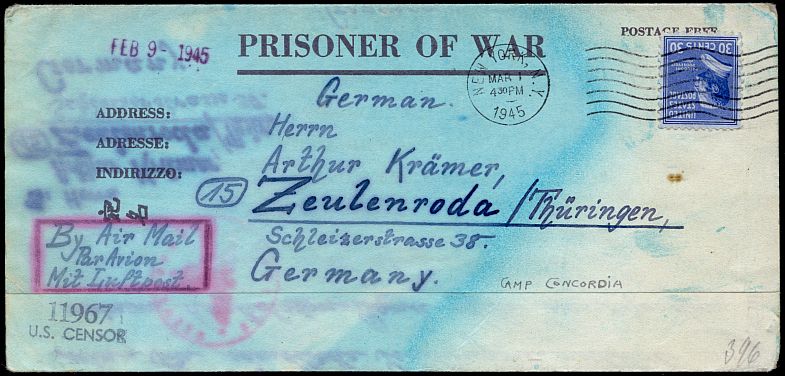
Domestic mail from prisoners of war and civilian detainees held in the United States was free beginning November 6, 1942, but foreign airmail postage had to be paid at the full rate. Much of such mail that has survived shows signs of chemicals used to detect "invisible" writing, such as this cover mailed home by a German Doctor in March of 1945.
